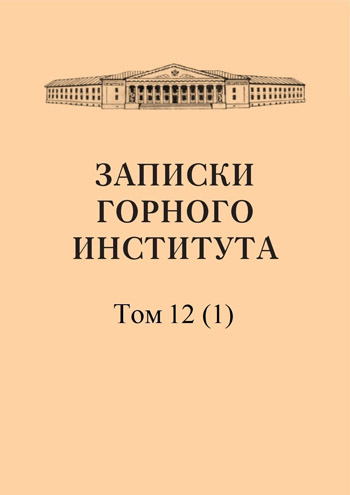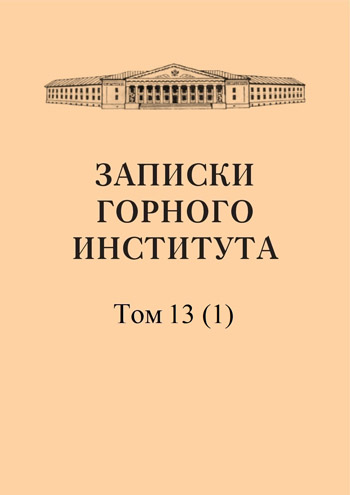-
Date submitted1938-07-24
-
Date accepted1938-09-17
-
Date published1939-01-01
Reference Debyeograms of cast stone minerals
- Authors:
- V. I. Mikheev
In the field of geological and mineralogical work, X-ray measurements can have a wide and varied application. In X-ray measurements, there are several methods for studying crystalline matter. The main methods are: the Laue method, the crystal rotation method, the Debye-Scherrer-Hall method, or the powder method and the Bragg method. To determine a given mineral, it is necessary to grind it into powder, obtain a Debyeogram from it and compare it with the Debyegrams of known minerals that could be assumed to be a given mineral. Similarly, when determining the mineral composition of a mixture, a Debyeogram is obtained from it and this latter is compared with the Debyegrams of those minerals whose presence was expected in the mixture. It follows that to apply this method it is necessary to have Debyegrams of known minerals as standards, with which the Debyegram of the analyzed substance is compared. In each individual area of application of the X-ray analysis method, a whole series of standard Debyegrams for a number of suspected substances must be prepared. At present, it is necessary to begin compiling an identification of substances based on their Debye patterns, similar to an identification of crystals based on goniometric data.
-
Date submitted1938-07-30
-
Date accepted1938-09-17
-
Date published1939-01-01
X-ray examination of some reference minerals and melted products of stone castings
- Authors:
- V. N. Dubinina
This work - a direct continuation of the work of V. I. Mikheev - is the implementation of part of a large and urgent task of compiling an X-ray detector, conceived by Prof. A. K. Boldyrev. It consists of two parts. The purpose of the first part is to replenish the number of reference powdergrams (debyeograms), the second is to determine the mineralogical composition of two stone casting products (obtained from an experimental stone foundry installation at the Research Institute of the Leningrad Mining Institute) by comparison with the data of the reference powdergrams.
-
Date submitted1938-07-19
-
Date accepted1938-09-03
-
Date published1939-01-01
Distribution of structures in a diabase-pycrite alloy casting
- Authors:
- L. G. Kvasha
In the petrographic study of stone foundry products, from the very first steps we faced the task of studying not only the composition and structures as individual units, but also the task of studying the distribution of these structures in the casting depending on the shape of the latter. The objective of this work was to petrographically study the structure of a casting consisting of an alloy of diabase and pyrite. The present work, which is purely descriptive, is one of the first attempts at the petrographic study of structures in stone castings as geological bodies or as castings of metal alloys. Such a study must be associated with accurate data on the experimental conditions (for example, the cooling rate and its effect on the formation of a particular structure), which is the main point in terms of future work.
-
Date submitted1938-07-04
-
Date accepted1938-09-25
-
Date published1939-01-01
Reference powdergrams of some minerals from the class of oxides
- Authors:
- V. I. Mikheev
- V. N. Dubinina
This work is one of the links in the chain to create an X-ray detector for minerals. The principles of constructing an X-ray detector, as well as the advantages of the X-ray method of powder in the diagnosis of minerals and in relation to deciphering the mineralogical composition of mixtures, are given in exhaustive detail by Prof. A.K. Boldyrev, V.I. Mikheev, G.A. Kovalev and V.N. Dubinina in the work “X-ray determinant of minerals” part I, so we will not touch on these issues here. We only note that at present the problem of creating an X-ray detector is so urgent that in a number of X-ray laboratories (Leningrad Mining Institute, Central Scientific Research Geological Prospecting Institute in Leningrad and the Institute of Applied Mineralogy in Moscow) the corresponding topic was put forward and work began directly on preparing material for the X-ray detector.
-
Date submitted1938-07-21
-
Date accepted1938-09-24
-
Date published1939-01-01
Study of the mechanical strength of stone casting materials depending on the thermal regime
- Authors:
- A. I. Efremov
The article examines the tasks of mastering, at the first stage, the issue of mechanical strength of products obtained from molten rocks. Concluding the description of the first part of the work, it is necessary to clearly pose the question of what new it brought to the stone foundry industry with its discovery of critical points and what paths are outlined for further successful development of this industry. At the moment, the discovery of critical points T1 and T2 makes it possible to scientifically explain in a completely new light extremely important issues related to the destruction of products during the process of heating and cooling. In addition, such an interpretation of them, being original and extremely timely, can make fundamental changes in the entire technological process of manufacturing castings from molten rocks with a significant restructuring of the thermal regime. It is quite clear that all this, while opening up new prospects in the development of the stone foundry industry, will require additional work on a large scale and not only within the framework of laboratory research alone.


